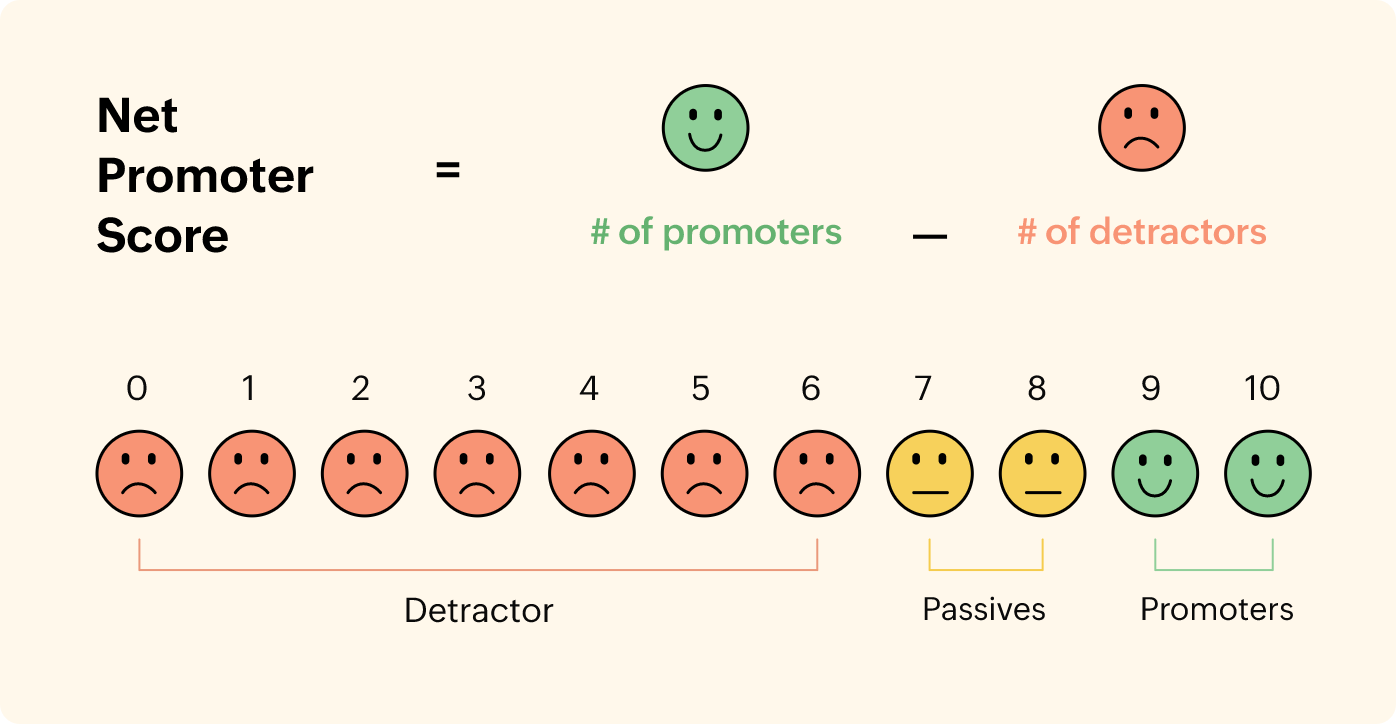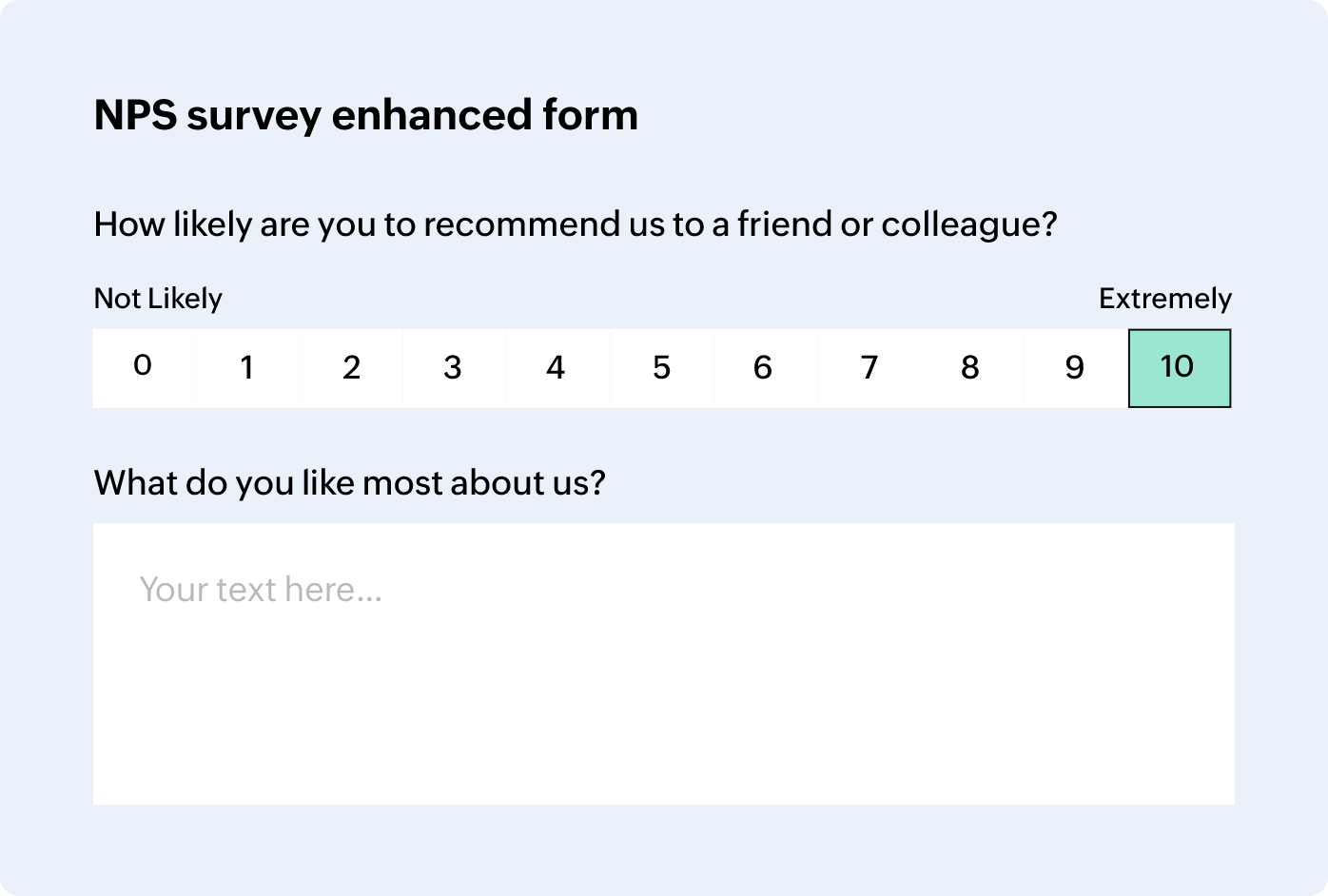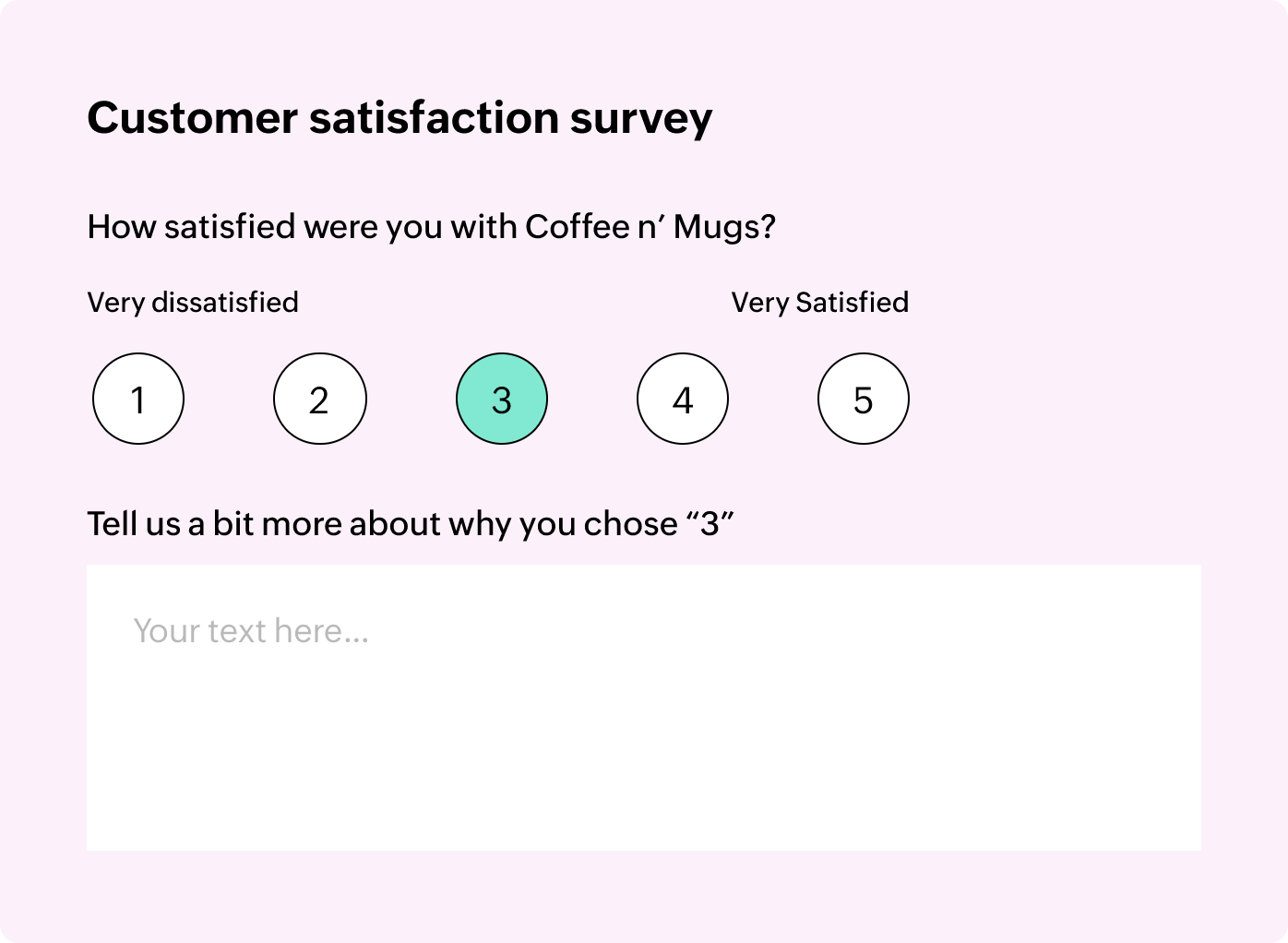Types of customer satisfaction surveys
Whichever way you slice it, surveys remain the best measurement of customers’ feedback. Customer satisfaction surveys don’t have to be difficult or expensive. In truth, integrating customer experience management into your business process is pretty straightforward. For information on how to do this, check out this article. These surveys come in four forms, each measuring slightly different parameters of customer expectations. They all measure your buyers’ sentiments and present them to you in a more digestible form. Let’s look at them one by one.
Net promoter score survey(NPS)
An NPS survey measures customer loyalty. It checks if the respondent would recommend you to others concerning various aspects of your service. Its response options range on a scale of one to ten. Based on the scores respondents give, the customer falls into one of three categories:
- The Promoters: They rate you a nine or ten and are your most satisfied and happy customers, committed to your business. They are likely to recommend you to others.
- The Passives: They rate you a seven or eight and are content with your product or service but not to the extent of remaining loyal.
- The Detractors: These customers rate you from zero to six and are unhappy and dissatisfied with your business on various levels. They never recommend you to others and are more likely to badmouth you.
Based on these ratings, you can calculate the overall promoter score using this formula

Your overall NPS score ranges from -100 to 100. A positive 100 is when all the respondents are promoters, and a -100 is when all the respondents are detractors. A positive NPS is what your company should be striving for. It indicates most of your customers are satisfied with your business.
Ideally, this survey comes in two parts. The first question asks for a rating, and the follow-up question asks for the reason for the rating. You can customize the follow-up question to your requirements.

Customer satisfaction surveys (CSAT Score)
CSAT surveys help you understand how satisfied or happy your customers are with your products or services. With this, you can gauge how well you live up to your buyer’s expectations. This survey identifies client needs, comprehends product issues, and can be used to categorize customers based on their responses. Choose the customer experience touchpoint you want to evaluate. Any interaction can have a different CSAT survey question.
The most basic CSAT survey is a two-part question. The first part asks respondents to rate their happiness with a particular experience. The second part asks about the reason for the score. You can tailor both questions to fit your needs.

Many CSAT surveys use a rating scale to assess changes in customer satisfaction over time. The answer scale is usually graded from one to five, where one represents “very unsatisfied”, and five represents “highly satisfied.” Customers provide ratings, which are combined to create the CSAT assessment. A four and a five rating fall under the satisfied and very satisfied ratings. Use the following formula to calculate CSAT scores:

If the results obtained from your CSAT survey show a score below 90% or a sudden negative change from a previous score, you must address the issue as soon as possible.
Customer effort score survey (CES)
This measure of customer satisfaction determines how much work it takes for customers to use your service or product or contact your customer care department for assistance.
It’s all about convenience. Be it navigating through your website, or tracking down an order, anything that’s easy to work with is preferred. Assessing the effort required to utilize your product will enable you to spot friction points and learn what your users think of as simple and uncomplicated.
Customer effort score survey (CES)
To what extent do you agree or disagree with the following statement? The company made it easy for me to handle my issues.
- Strongly Disagree
- Disagree
- Somewhat Disagree
- Neutral
- Somewhat Agree
- Agree
- Strongly Agree
A typical CES survey also has two parts. Customers rate the ease of their experience on a numerical one to five or one to seven scale, but more creative and visual solutions can include an emoticon anger-to-happiness scale. A five-point scale with options like “extremely difficult,” “slightly easy,” “very easy,” etc. can also be offered to clients. You can customize the second question based on the users’ initial score.
The collected answers are averaged to estimate how much work customers must put into a particular process. This feedback will enable you to enhance the areas producing friction and replicate user preferences.
Product market fit survey
The most crucial factor to comprehend when trying to scale up your business is where it fits in the market. A product-market fit survey can help you chart your future steps.
This survey ascertains if there is enough demand in the market for your products by simply asking the question: “How would you feel if you could no longer use {the product}?”
It’s crucial to first determine whether the respondent is a “genuine user” to get meaningful and accurate information. Be sure to throw in a follow-up question to get more insights. Work on some demographic questions as well. You can use this information to help hone your sales and marketing strategies. If more than 40% of your respondents say they would be disappointed if your products were discontinued, you have good market reception.
Over to you…
Ninety-five percent of buyers do not discuss their experience unless asked.Therefore, creating effective surveys that elicit honest responses is pertinent in measuring authentic customer gratification.
To maintain high response and completion rates, you must design an easy way for people to complete surveys. With Zoho Survey’s thorough experience management tools, you can gather pertinent information and work to improve the user experience gradually.
Are you geared up to improve your customer feedback system? Request a demo to learn how to boost survey response rates in the future without annoying your users.



